AARRR:2.1
一点一点学:
学习来源:https://zhuanlan.zhihu.com/p/285676746
数据来源:https://tianchi.aliyun.com/dataset/dataDetail?dataId=649&userId=1
先从1亿数据中选择10万数据进行分析:

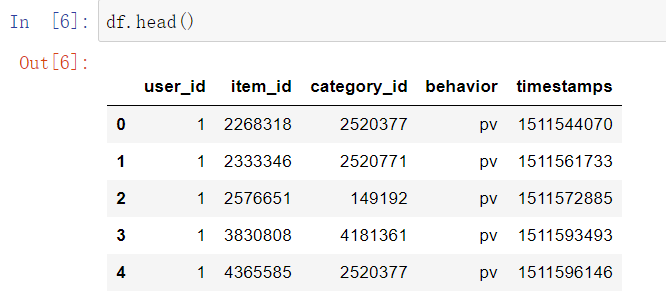
数据清洗
方法一:python
先把时间戳转化为标准时间格式:

或者通过下面方式转化:

看一下数据集里的时间区间是否在2017年11月25日至2017年12月3日
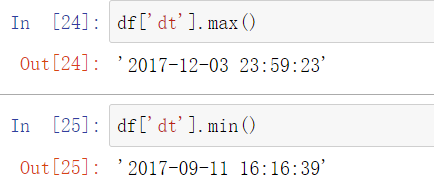
删除不符合的时间

查看数据集有99956个数据,并且去重后有99956个数据,说明数据没有重复值
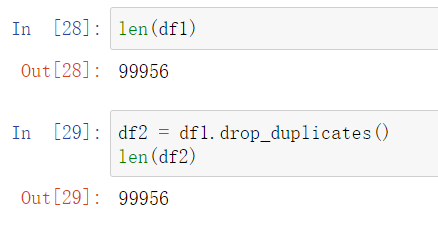
没有空值:
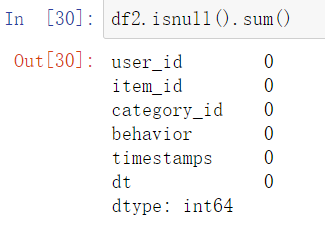
有983位用户,商品总数为64440件,商品类目总数为3128,行为类型为pv、fav、cart、buy4种。
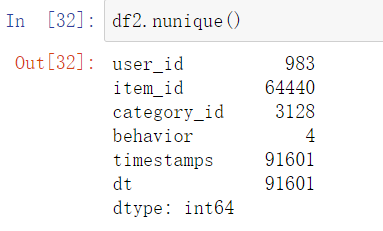
补充:
#求某列有多少种不同的数(相当于去重后count()):
#df.name.nunique()
#对所有列分别求:
#df.nunique()
#unique()是以 数组形式(numpy.ndarray)返回列的所有唯一值(特征的所有唯一值)
#nunique() Return number of unique elements in the object.即返回的是唯一值的个数
因为要计算各天及各时间段,所以要先提取时间,只保留日期的年月日:


需要排除同一天用户多次登录的情况,根据id和日期进行去重:

找到每个用户第一天登陆的日期:
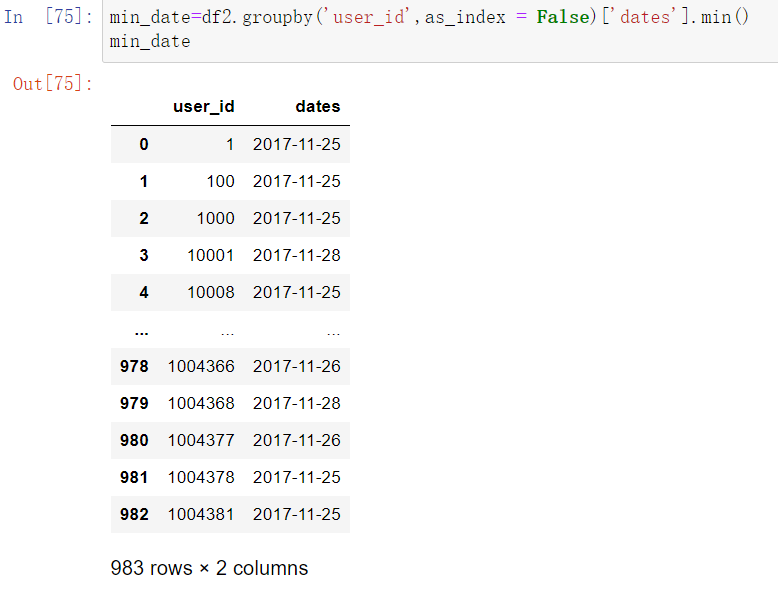
源数据字段较多,求留存率暂时用不上,为了简化,只取一部分:
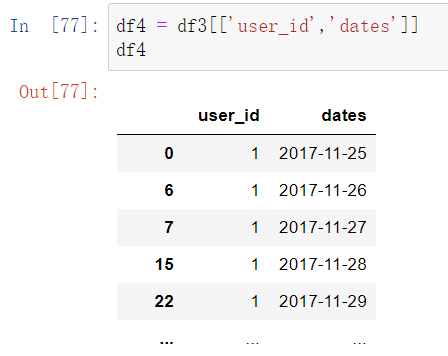
两个表进行拼接:
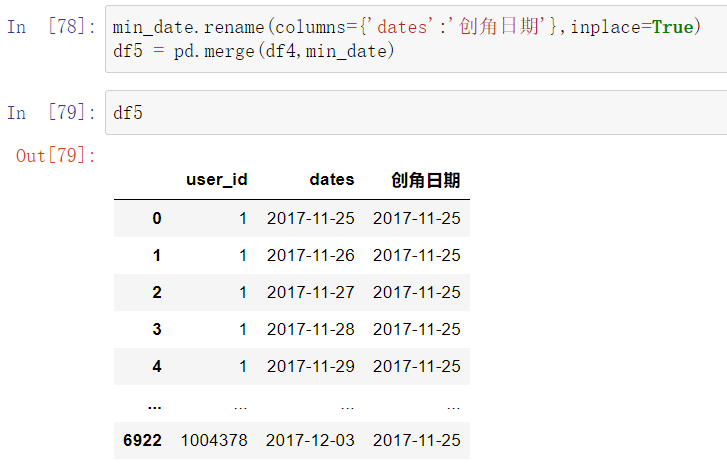
计算与第一次登陆相差天数:

先设置展示留存率的格式

转为数字格式

留存率计算for循环,使用索引
或者使用.iloc函数


方法二:mysql
创建user_behavior同时把时间戳格式转为年月日时分秒格式
create table user_behavior
select user_id,item_id,behavior,FROM_UNIXTIME(timestamps,'%Y-%m-%d %H:%i:%S') as times
from userbehavior1
检查时间范围:
DELETE from user_behavior
where times<'2017-11-25 00:00:00' or times>'2017-12-04 00:00:00';
SELECT max(times),min(times) from user_behavior;

查看记录数:
SELECT count(user_id),
count(item_id),
count(category_id),
count(behavior),
count(times)
from user_behavior;

查看每个字段有多少个不同的值:
SELECT count(DISTINCT user_id) as 用户总数,
count(DISTINCT item_id) as 商品总数,
count(DISTINCT category_id) as 商品类目总数,
count(DISTINCT behavior) as 行为数 from user_behavior;

增加一列数据date,只包含年月日:
#ALTER table user_behavior add column dates varchar(20);
#UPDATE user_behavior SET dates=date(times);
select * from user_behavior
limit 5

计算留存率:
SELECT *,
concat(round(100*t.次日留存/t.新用户数,2),'%') as 次日留存率,
concat(round(100*t.三日留存/t.新用户数,2),'%') as 三日留存率,
concat(round(100*t.七日留存/t.新用户数,2),'%') as 七日留存率
from
(SELECT a.dates,
count(DISTINCT b.user_id)as 新用户数,
count(DISTINCT case when DATE_ADD(b.`首次出现日期`,INTERVAL 1 day)=c.dates then c.user_id else null end) as 次日留存,
count(DISTINCT case when DATE_ADD(b.`首次出现日期`,INTERVAL 3 day)=c.dates then c.user_id else null end) as 三日留存,
count(DISTINCT case when DATE_ADD(b.`首次出现日期`,INTERVAL 7 day)=c.dates then c.user_id else null end) as 七日留存
from
(SELECT dates from user_behavior
GROUP BY dates)a
LEFT JOIN
(SELECT user_id,min(dates) as 首次出现日期 from user_behavior
group by user_id) b
on a.dates=b.`首次出现日期`
LEFT JOIN user_behavior c
on b.user_id=c.user_id
GROUP BY a.dates)t
;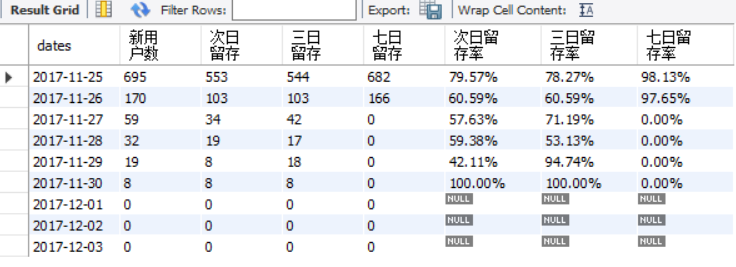
留存率mysql计算方法似乎有别的办法?根据python的计算方法类推得到:
select min_day,
sum(case when 天数=1 then 1 else 0 end)/count(distinct user_id) as '次日留存率',
sum(case when 天数=2 then 1 else 0 end)/count(distinct user_id) as '2日留存率',
sum(case when 天数=3 then 1 else 0 end)/count(distinct user_id) as '3日留存率',
sum(case when 天数=4 then 1 else 0 end)/count(distinct user_id) as '4日留存率',
sum(case when 天数=5 then 1 else 0 end)/count(distinct user_id) as '5日留存率',
sum(case when 天数=6 then 1 else 0 end)/count(distinct user_id) as '6日留存率',
sum(case when 天数=7 then 1 else 0 end)/count(distinct user_id) as '7日留存率'
from(
select t1.user_id,min_day,normal_day,datediff(normal_day,min_day) as '天数'
from
(
(select distinct user_id, dates as normal_day
from user_behavior) t1
#t1需要排除同一天多次登录的情况
left join
#t2为每个用户最早登陆日期
(select user_id,min(dates) as min_day
from user_behavior
group by user_id) t2
on t1.user_id=t2.user_id
)
) t4
group by min_day
思路就是先把排除同一天多次登录的情况的用户时间表找出来,然后找出每个用户最早登陆日期,两张表拼接时间作差作为间隔,然后利用留存率公式计算。
参考:https://www.jianshu.com/p/d76ecbaa97d4




【推荐】国内首个AI IDE,深度理解中文开发场景,立即下载体验Trae
【推荐】编程新体验,更懂你的AI,立即体验豆包MarsCode编程助手
【推荐】抖音旗下AI助手豆包,你的智能百科全书,全免费不限次数
【推荐】轻量又高性能的 SSH 工具 IShell:AI 加持,快人一步
· 震惊!C++程序真的从main开始吗?99%的程序员都答错了
· winform 绘制太阳,地球,月球 运作规律
· 【硬核科普】Trae如何「偷看」你的代码?零基础破解AI编程运行原理
· 超详细:普通电脑也行Windows部署deepseek R1训练数据并当服务器共享给他人
· 上周热点回顾(3.3-3.9)